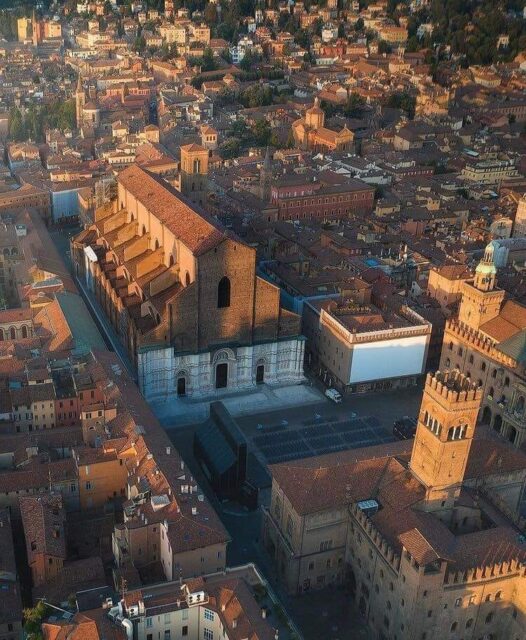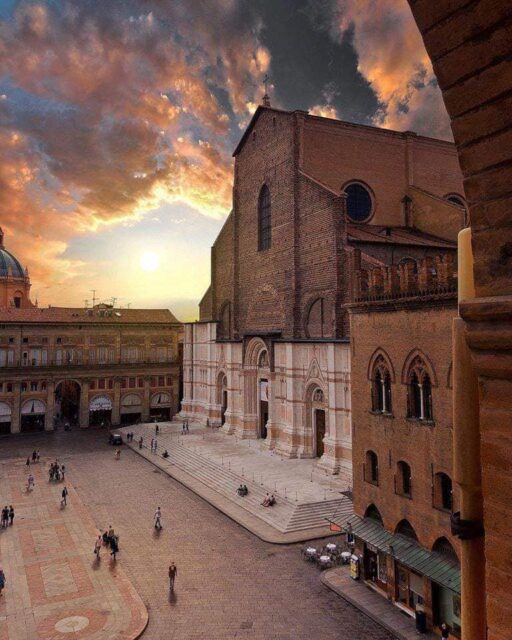Basilica of San Petronio
The Basilica of San Petronio, dedicated to the city’s patron saint (eighth bishop of Bologna from 431 to 450), is the largest and most important church in Bologna (132 m long, 66 m wide, 47 m high).
Construction began in 1390 under the direction of Antonio di Vincenzo. In 1514 Arduino degli Arriguzzi proposed a new Latin cross model that would have surpassed in size of the church of San Pietro in Rome. According to the legend Pius IV blocked the realization of this grand dream, soliciting the works for the construction of the Archiginnasio. The façade also remained unfinished. The roofing of the main nave and the closing of the apse were completed only in 1663 on a project by Girolamo Rainaldi and directed by Francesco Martini.
The minor naves were closed by straight walls. Famous was the Petronian musical chapel whose most prestigious symbol is a still functioning organ, built around 1470 by Lorenzo da Prato: the oldest in the world still in use. Another more recent organ (1596) is by Baldassarre Malamini and this too is functional despite its four hundred years of life.
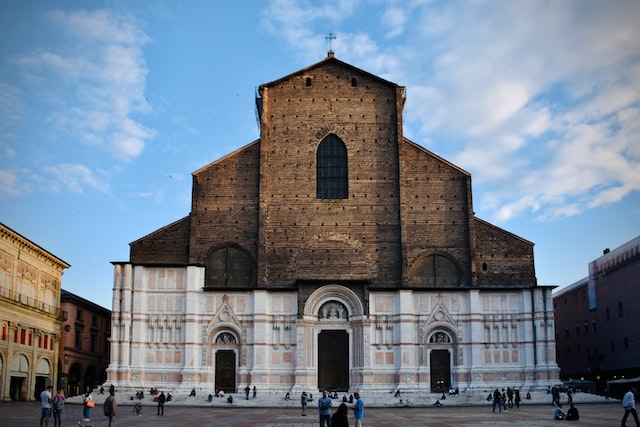
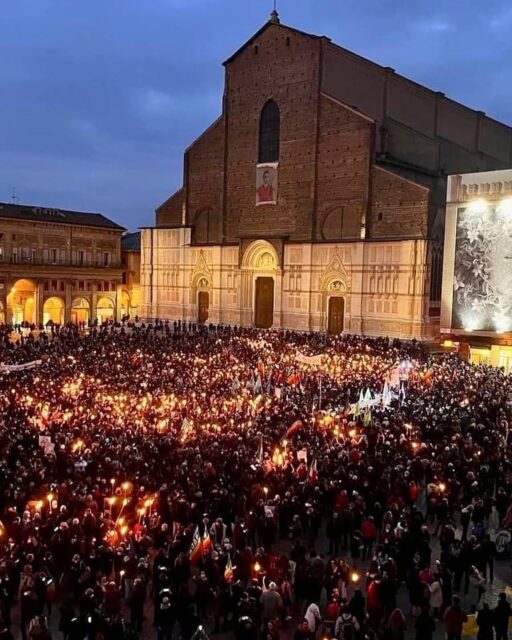
On 4 October 1814 the chapel of the SS. Sacramento, restored by Antonio Malvezzi Campeggi on a project by Angelo Venturoli. In 1894 the San Petronio Museum was opened on a project by T. Azzolini. Finally, between chapels 1 – 2, 9 – 10, 13 – 14, and 21 – 22, there are the four stone crosses which, according to legend, were placed by San Petronio at the corners of the perimeter of the city, defined in the following centuries the circle of the selenite walls.
Giacomo Ranuzzi began the marble cladding of the facade, which was never completed, in 1538 based on a design by Domenico da Varignana. The finished part is decorated with works by the sculptors Jacopo della Quercia, Amico Aspertini, and Alfonso Lombardi.
The central portal, begun in 1425, is a masterpiece by Jacopo della Quercia. On the pillars, scenes from the Old Testament are represented, on the archivolt 18 prophets, on the architrave stories from the New Testament, and the tympanum the “Madonna with Child” and “Sant’Ambrogio and San Petronio”. The center of the arch of the tympanum is the work of Amico Aspertini. Worthy of note in the two side doors are the “Resurrection” by Alfonso Lombardi on the left door and the “Deposition” by Amico Aspertini on the right door.
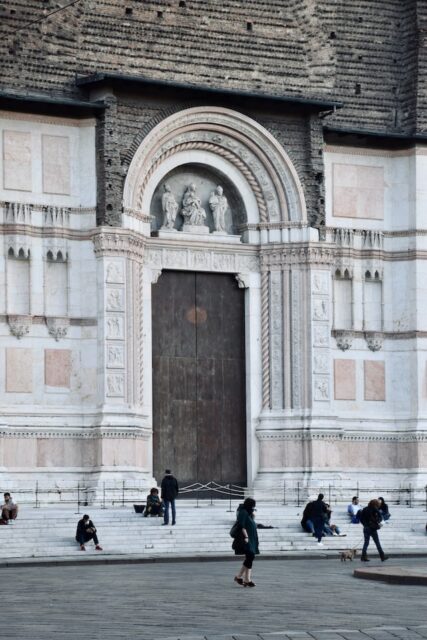
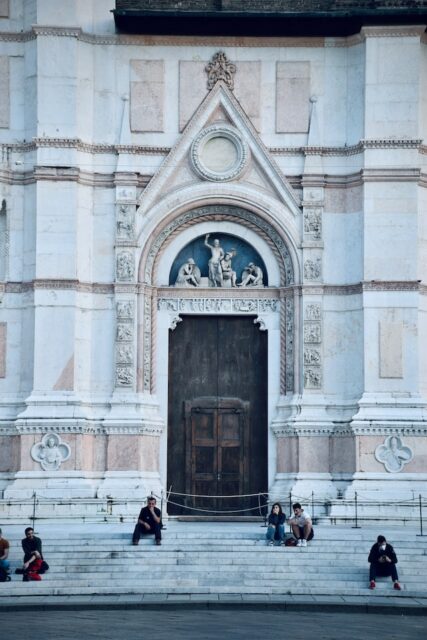
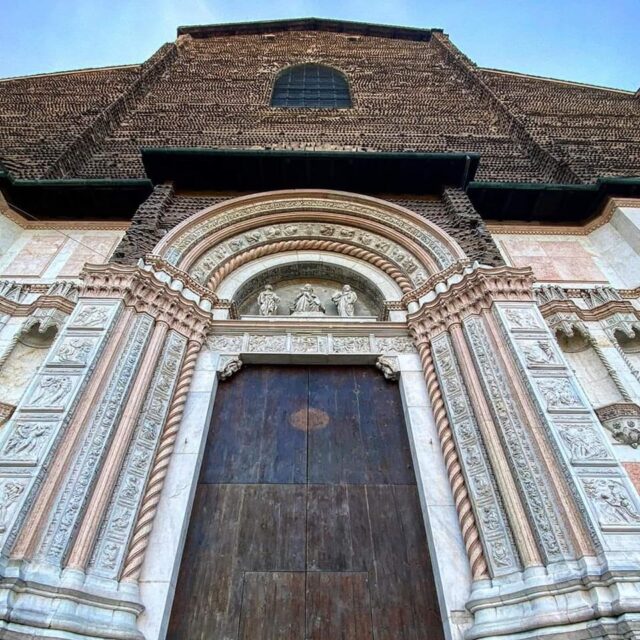
Chapel of S. Giacomo (VII) formerly Rossi and Baciocchi. On the altar the splendid “Madonna Enthroned” by Lorenzo Costa (1492); the drawings of the polychrome glass are attributed to the same artist.
The right funeral monument preserves the remains of Prince Felice and his wife Elisa Bonaparte made by Lorenzo Bartolini and Cincinnato Baruzzi. Chapel of S. Rocco (VIII) or Malvezzi Ranuzzi Chapel. On the altar is the “San Rocco” by Parmigianino (1527). The stained glass windows were designed by Achille Casanova (1926).
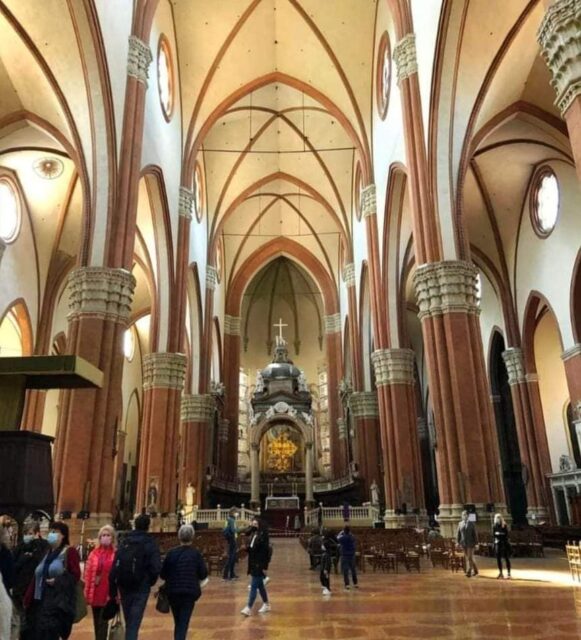
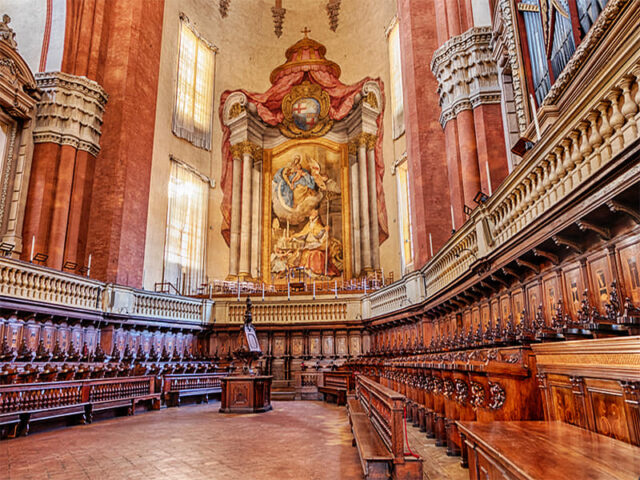
The Sundial of San Petronio. It was conceived and built by Gian Domenico Cassini, a teacher in the Bologna studio, around 1656 after the church by Egnazio Danti had been destroyed during the extension of the church. For the calculations, Cassini used instrumentation that is now visible in the Museum.
The sundial of San Petronio is the longest in the world (67.72 m long, light hole 27 m from the ground, distance between the solstices 56 m); its length corresponds to the six hundred thousandth part of the terrestrial meridian. It was renovated in 1775 by the astronomer Eustachio Manfredi, who replaced the iron line with a brass one.
